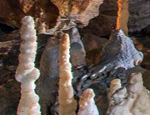 |
Preservation, Restoration, and Repair:
Projects and considerations in the Southwest
A discussion of projects and considerations in the Southwest Region. Moderated by Mike Mansur; presenters include Minori Yoshida, Michael Moffitt, and Carrin Rich. |
Mike Mansur, with
Minori Yoshida, Michael Moffitt,
and Carrin Rich
August 9, 2022
|
 |
The Great Debate 2022
A wide-ranging discussion of what the candidates for NSS director propose to do, followed by a question and answer session with over 100 live member attendees on current issues facing the NSS.
|
Hazel Barton and Derek Bristol
May 5, 2022
|
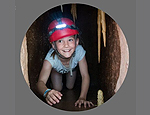 |
CaveSim: Cave-inspired STEM Learning
A presentation about the trailer-bound simulated cave that is a learning tool for teaching young people of all ages about the importance of the under-ground, how to appreciate a cave and its contents, how to navigate it, and some of the mathematical and engineering concepts employed. |
Dave Jackson
April 28, 2022
|
 |
What to Expect at NSS Convention 2022
This Presentation is an update on the plans for the 2022 Convention in Rapid City, SD, on June 12-17. This is going to be one of the most exciting conventions ever, and the convention volunteers want to give you all the information you need to make the most of everything the Black Hills have to offer! |
Carol Tiderman, Adam Weaver
and Chris Pelzcarski
March 20, 2022
|
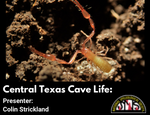 |
Central Texas Cave Life
Colin Strickland will show photos and videos of the commonly encountered organisms found in Central Texas caves, "shedding light" on organisms from a pseudoscorpion hunting food to animal fun at cave entrances. |
Colin Strickland
February 23, 2022
|
.jpg) |
Our Race With Coronavirus, Part 5:
Variants, Boosters, and Immunity
Dr. Hazel Barton presents a timely update about the coronavirus and its variants, as we long for a return to normalcy. The prospect of the first live convention in 3 years is discussed in terms of risk assessment. |
Dr. Hazel Barton
January 26, 2022
|
 |
Moon Diver: Descent into the Ancient Lavas of the Moon
Deep volcanic collapse pits were discovered on the Moon: some of them opened into subterranean caverns. The NASA Moon Diver mission concept proposes to send an extreme terrain rover into one of these pits, rappelling down the wall to expose the history of the lunar mare. |
Dr. Laura Kerber
June 10, 2021
|
 |
Talking Stones: Cherokee Syllabary in Manitou Cave
Inside Manitou Cave in modern Alabama, nineteenth-century Cherokees carried out sacred ceremonies and recorded their activities on the cave walls using "The Cherokee Syllabary," a system invented in nearby Willstown by Cherokee scholar Sequoyah. |
Beau Carroll
February 4, 2021
|
 |
Dark Waters, Strange Creatures
Observant cavers may occasionally notice unusual animals swimming or crawling in underground streams and pools. but most aquatic cave animals go unnoticed and many are yet to be discovered. |
Benjamin Hutchins
January 20, 2021
|
 |
Cave Protection Network
The Cave Preservation Network (CPN) is a new program by the NSS that seeks to build stronger ties with the National Caves Association and show caves across the nation.
|
Adam Weaver
January 14, 2021
|
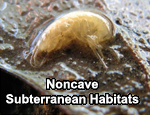 |
Non-cave Subterranean Habitats
An exploration of eyeless de-pigmented organisms that look like cave dwellers, which are found in a wide variety of other dark places. This research gives new insights into the evolution of eyeless de-pigmented organisms in caves. |
Dr. David Culver
December 8, 2020
|
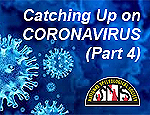 |
Getting Ahead of COVID-19
With the imminent arrival of three vaccines against COVID-19, it may seem that life will soon return to normal. This presentation describes how vaccines work with our immune system, and why it is critical that we don’t let lockdown fatigue create more infections. |
Dr. Hazel Barton
December 2, 2020
|
 |
Secrets of Silk Used by Spiders and Glowworms
Spiders and glowworms construct sticky traps out of silk fibers to ensnare flying or falling insects. Scientists and engineers can also learn from these materials made in the “natural laboratories” to help solve real-world challenges of today.
|
Dr. Dakota Piorkowski
November 20, 2020
|
 |
Getting Ahead of Coronaviruses (Part 3)
Antimicrobial Agents and Vaccines
In Part III of the Coronavirus webinar series, this video will provide a short introduction on how coronaviruses replicate and how this allows us to develop antiviral treatments. |
Dr. Hazel Barton
June 8, 2020
|
 |
The Director Election Debate 2020
A wide-ranging discussion of what the candidates for NSS director propose to do, followed by a question and answer session with over 100 live member attendees on current issues facing the NSS |
Moderated by
Hazel Barton and Derek Bristol
May 21, 2020
|
 |
The State of the NSS: An Evening with the NSS Officers
This webinar includes an overview of the NSS and how it is organized, theresponsibilities of the NSS Officers, current issues and membership trends, and financial status. A question and answer period follows. |
|
 |
Keeping Up with Coronavirus (Part 2)
Where do we go from here?
This follow-up to Catching Up On Coronavirus explores coronaviruses in more detail, including their origin, structure, how they replicate, and what this means about drugs, vaccines, testing and immunity. |
Dr. Hazel Barton
April 29, 2020
|
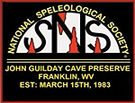 |
Trout Rock Caves: John Guilday Caves Nature Preserve
Earl Suitor discusses the Trout Rock Caves (NSS John Guilday Caves Nature Preserve) as well as the Dry Run Caves of Pendleton County, WV. He explains the history, paleontology, and geology of the area and who John Guilday was. |
Earl Suitor
Preserve Manager
April 22, 2020
|
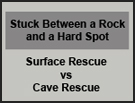 |
Stuck Between a Rock and a Hard Spot
A discussion of the many unique and vital differences between “above ground” rescues and “underground/cave” rescues. A well trained, competent and skilled team is mandatory in order to protect both theteam and expediently rescue the patient(s) from underground. |
Tom Evans
and
Debbie Spoons
April 1, 2020
|
 |
Catching Up on the Coronavirus
A short introduction to viruses, virology, and what the coronavirus is, and a discussion about where we think the virus comes from, how it causes disease, and where we are in dealing with it. |
Dr. Hazel Barton
April 1, 2020
|
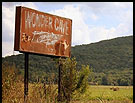 |
The History and Exploration of Wonder Cave, TN
Located in the Pelham Valley in Grundy County, Wonder Cave was operated as a commercial attraction from 1897 until 2000, when it was closed to the public and cavers. In 2014 it was mapped for the first time. Take a tour of the history and beauty of this exceptional cave. |
Kelly Smallwood
May 7, 2019
|
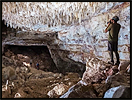 |
Grand Canyon's Double Bopper Cave
Reaches 40 Miles Long
Two 2018 expeditions pushed this cave to 40.6 miles long, and into the top 10 longest in the U.S. New discoveries include remarkable finds. |
Beth Cortright
March 13, 2019
|
 |
Cave Safely, Cave Softly: BSA Caving Policy and Training
Details of what qualifies a trip leader, what age groups are allowed to enter a wild cave, how many qualified trip leaders are required for each group, the requirements for horizontal vs. vertical caves, and much more. |
Debbie Spoons
NSS-BSA Liaison
Allen Maddox
NSS Youth Group Liaison
December 4, 2018 |
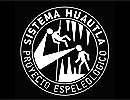 |
Managing a Major International Caving Project
Projecto Espeleologico Sistema Huautla (PESH)
Bill Steele explains what it's like managing such a huge project as the exploration of Sistema Huautla (Proyecto Espeleologico Sistema Huautla, or PESH), which he has co- led for 23 years.
|
Bill Steele
NSS 8072 LB-FE-CM-AL
November 13, 2018
|
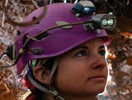 |
Salt, Smoke, and Sketchy Slopes: Grand Canyon Caves
In Grand Canyon National Park, expedition teams have surveyed over 11 miles of new cave passage in the past 2 years. A new cave with large passages and impressive formations, called Gryffindor Cave, was discovered in 2016, bringing system length to 36.7 miles. |
Beth Cortright
October 2, 2018
|
 |
The International Union of Speleology and the NSS
The UIS is the international caving body, in which the NSS represents the US among 54 member nations. George Veni, the current UIS president, explains the history and focus of the UIS in many projects around the world, and how they merge with the goals of the NSS. |
Dr. George Veni
National Cave & Karst Research Institute
September 18, 2018
|
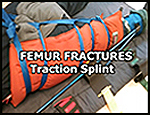 |
Femur Fractures: Traction Splinting for Tecnical Rescue
An exploration of current trending, indications, and application of femur traction splinting based on evidence-based, best practices. Demonstrations of how to improvise in back-country and underground situations. |
Lance Tysom
RN, BSN, CEN, CPEN, CFRN, EMP, WEMT
June 5, 2018 |
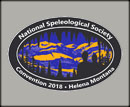 |
Lions and Wolves and Bears, Oh My!
Chairperson Doug Warner provides a detailed look at the first NSS convention to be held in Montana. |
Doug Warner
Chair, NSS 2018
May 21, 2018 |
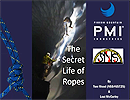 |
The Secret Life of Ropes
How are ropes made? What’s the difference between static, low stretch or dynamic rope? Does my rope have to be certified? How do we choose the right rope? When do we retire them? |
Tom Wood
December 5, 2017 |
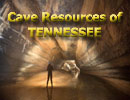 |
Cave Resources of Tennessee
A photographic exploration of Tennessee caves, with emphasis on their physical and cultural resources, including unusual geology, such as meteor impact karst, amazing formations, early human exploration, ancient artwork
and Pleistocene megafauna. |
Chuck Sutherland
November 6, 2017 |
 |
Comparing Two Rope Rescue Systems (Twin Tension)
A comparison of a main line that holds all the load, and a second belay line that is un-tensioned, versus two tension systems, where both ropes hold about half the total load at all times. |
Tom Evans
April 18, 2017 |
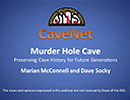 |
Murder Hole Cave -- Preserving Cave History
Videographer David Socky and author Marian McConnell talk about the Murder Hole Cave movie and book as an example of preserving cave history for future generations. This infamous cave in Catawba, Virginia is now the subect of the book and a movie documentary. |
Marian McConnell and Dave Socky
March 23, 2017 |
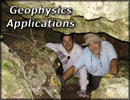 |
Geophysical Applications to the Karst of Edwards Aquifer
A discussion of resistivity imaging (2D and 3D), natural potential (NP) and other geophysical data (conductivity, magnetic, induced polarization, and seismic refraction data) collected over the karstic features of the Edwards Aquifer of southcentral Texas. |
Mustafa Saribudak
Environmental Geophysics Assoc.
January 24, 2017 |
 |
A Review of Knot Strength Testing
A literature review and meta-analysis of knot strength research (114 studies) was performed and the results show just how strong knots are both in relationship to each other and their absolute strengths in various materials. |
Tom Evans
November 29, 2016 |

|
Underground Cave Cities of Central Turkey
For many years, the people of Turkey actually dug their homes underground. Entire cities were formed that branched off to create a sprawling underground civilization. Trevor Parker takes you on a tour of these cities, still being discovered today. |
Trevor Parker
October 6, 2016 |
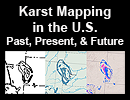
|
Karst Mapping in the U.S. - Past, Present, and Future
The history of mapping karst at the national scale in the United States by the U.S. Geological Survey. Modern approaches for mapping karst geomorphology are also discussed, with emphasis on high-res surface topographic mapping through LIDAR.
|
Dan Doctor
U.S. Geological Survey
May 4, 2016 |
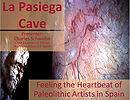 |
La Pasiega Cave: Paleolithic Art in Spain
La Pasiega cave, in Northern Spain, is a premier example of Paleolithic cave art and a UNESCO World Heritage site. The cave was richly decorated with hundreds of animal figures and ideomorphic symbols between 25,000 and 12,000 years before present day |
Charles Schwalbe
Chief Experience Officer
April 13, 2016 |
 |
Exploration of Sistema Huautla
Sistema Huautla is the deepest cave in the Americas, and the 8th deepest cave in the world. It was the first cave outside of Europe to be explored to over 1,000 meters deep. It is 72 km long (44 miles), and 1,544 meters deep (5,068 feet). |
Bill Steele
Expedition Co-Leader
March 2, 2016 |
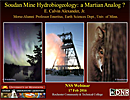 |
Rimstone Dams on Mars?
The presence of iron oxide rimstone dams in the Soudan Mine suggest an analog for conditions on Mars. They also form a productive environment for several microbiological communities, suggesting life on Mars. |
Dr. Calvin Alexander
University of of Minnesota
February 17, 2016 |
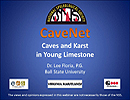 |
Caves and Karst in Young Limestone
A historic picture of cave science in Florida and how the sciences of speleology and hydrogeology equally misrepresented Florida until the turn of the 21st Century. Since then, a broader perspective of what the term 'karst' means has permeated both sciences. |
Dr. Lee Florea, P.C.
Ball State University
January 19, 2016 |
 |
Webbing Anchors for Sport and Rescue Rigging
A discussion of the testing data for webbing anchors, and their properties so that riggers can select the best for their conditions. The discussion includes a literature review of past anchor testing.
|
Tom Evans
NCRC Instructor
September 15, 2015 |
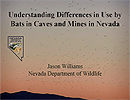 |
Roost Selection by Nevada Bats
Jason discusses his research on cavernicolous roosting bats in Nevada, focusing on better understanding the macro- and micro-climates bats are selecting for different types of roost use, including: maternity, hibernation, and migration.
|
Jason Williams
Nevada Dept. of Wildlife
May 28, 2015 |
 |
Caves Across the Solar System
It's a great big holey Solar System out there with caves now clearly visible on the Moon, Mars, and other bodies. Dr. Boston conducts a tour of extraterrestrial caves found to date, and current thinking about how we can go forward to explore these places.
|
Dr. Penny Boston
NASA Planetary Protection Subcommittee
April 8, 2015 |
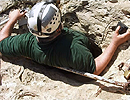 |
Crack and Crevice Entrapment
What do you do when you or someone you are caving with gets stuck? Do you know how to rescue yourself or someone else from an entrapment situation? This introduction to extrication will better prepare you to respond to this situation.
|
Anmar Mirza
NCRC National Coordinator
March 25, 2015
|
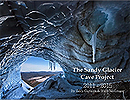 |
Sandy Glacier, Oregon: The Mystery and the Beauty
The story of the Sandy is not new, but rather is echoed across the planet: a fateful realism that our glacier/ice caves are losing ice at an accelerated pace.
|
Eddy Cartaya & Brent McGregor
Expedition Leaders
Febuary 17, 2015
|
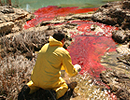 |
Tracer Testing (Dye Tracing) in Karst Aquifers
Tracer testing is a very powerful tool to investigate groundwater flow paths and time of travel in karst aquifers. This presentation discusses common tracing methods and dyes, potential liabilities, and interpretation of results. |
Geary Schindel
Chief Technical Officer
Edwards Aquifer Authority
February 4, 2015 |
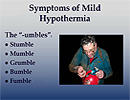 |
Hypothermia: Do You Know the Subtle Signs?
Did you know that you or a fellow caver could get hypothermia even in a "warm cave"? Did you know that recognizing the UMBLES could save your life, or someone else's?
|
Rebecca Segrest
ICU Nurse, NCRC Instructor
January 27, 2015
|
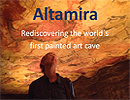 |
Altamira Prehistoric Cave Art
Relive the discovery of Altamira Cave in Cantabria, Spain through its discoverer, Marcelino Sanz de Sautuola. The 270-meter cave is home to the some of the oldest known painted art in the world. |
Charles Schwalbe
Chief Experience Officer
January 14, 2015
|
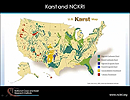 |
Living With Karst: A Cavernous Environment
About 25% of the US and the planet's land surface is karst. Karst areas are the world's most diverse, fascinating, resource-rich, yet problematic terrains. They are also the landscapes most vulnerable to environmental impacts. |
George Veni
Karst hydrogeologist, NCKRI
November 18, 2014
|
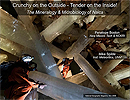 |
The Mineralogy & Microbiology of Naica
Enormous crystals, stifling heat, and a thriving microbial community of extremophiles make Mexico's Naica caves some of the most amazing and hostile in the world, and an extreme environment for both life and mineralogy. |
Dr. Penny Boston
Professor, New Mexico Tech
March 5, 2014
|
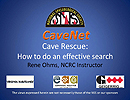 |
Cave Rescue: How to Conduct an Effective Cave Search
What factors to consider when faced with a lost subject(s) – how to save time by limiting your search area, strategies for deploying search teams, and effective underground search techniques. |
Rene Ohms
NCRC Instructor
February 11, 2014
|
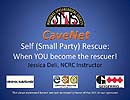 |
Self (Small Party) Rescue: When YOU become the rescuer!
Do all cave related accidents and injuries require a call out? How do I know if and when I should call for outside help? What can I do to help facilitate a safe and efficient evacuation of an injured caver? |
Jessica Deli
NCRC Instructor
January 9, 2014
|
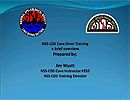
|
Cave Diver Training: A Brief Overview
What first steps should one take in order to become a competent cave diver? What is the required equipment, and what indispensable skills are taught in this training? What are the psychological implications? |
Jim Wyatt
NSS Cave Diving Section
November 14, 2013
|
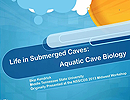 |
Life in Submerged Caves: Aquatic Cave Biology
Life found in water-filled caves ranges in size from microbial mats to larger cave-visiting fish, creating delicate - and fascinating - ecosystems. This webinar is designed for non-scientist cave divers, cavers, and the layman with an interest in underwater caves. |
Skip Kendrick
NSS Cave Diving Section
October 17, 2013
|
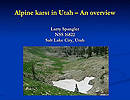 |
Alpine Karst in Utah: An Overview
Utah contains a considerable amount of carbonate-rock terrain and some of the best-developed alpine karst anywhere in the western U.S., including Main Drain, at 1,227 feet deep, and Ricks Spring, one of the biggest underwater cave discoveries in the western U.S. |
Larry Spangler
Groundwater Hydrologist, USGS
June 27, 2013
|
 |
Global Underwater Explorations
Join underwater explorer Jarrod Jablonski as he shares his incredible stories of cave diving and shipwreck expeditions. Jarrod Jablonski is the founder and CEO of Global Underwater Explorations (GUE) and holds several world records for cave diving excursions. |
Jarrod Jablonski
Global Underwater Explorations
June 23, 2013
|
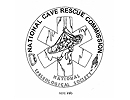 |
Introduction to the National Cave Rescue Commission
The NCRC was chartered by the NSS as a training and resource coordination body and has become the premier cave rescue training organization in the world. Every person involved with the NCRC is a volunteer, and NCRC courses attract a wide spectrum of students. |
Anmar Mirza
NCRC National Coordinator
May 22, 2013
|
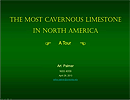 |
A Tour of the Most Cavernous Limestone in North America
Most of the largest American caves are located in a single limestone deposit that extends throughout most of the country. Because of variations in geology, its caves show a remarkable difference from place to place. |
Art Palmer
Hydrogeologist, SUNY
April 29, 2013
|
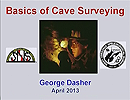 |
Introduction to Cave Surveying
The art and science of mapping caves, while similar to land surveying, is much more complex in that it is three-dimensional, and in addition to its boundaries, a cave's internal features need to be described. |
George Dasher
Surveyor and author
April 10, 2013
|
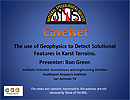 |
Use of Geophysics to Detect Solutional Features in Karst
Detection of solutional features in karst terrains can be daunting when there is no surface expression. A variety of geophysical tools has been used to assist in this effort. Direct current electrical resistivity has proven to be useful in the identification and characterization of karst features. |
Ron Green
Institute scientist, SWRI
March 11, 2013
|
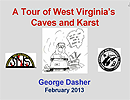 |
A Tour of West Virginia Caves and Karst
This presentation will describe the limestones, karst types, many karst areas, and some of the caves of West Virginia. West Virginia was one of two states where organized caving began in the United States, and which has more than 4500 documented caves at present. |
George Dasher
Surveyor and author
February 13, 2013
|
 |
The Mysteries of Easter Island Caves
This vivid, image-driven presentation covers recent discoveries and interpretations of over five years of research on "Te Pito o Te Henua" (or Navel of the World). Jut Wynne provides an overview of the natural history and ancient human settlement. |
Judson "Jut" Wynne
Northern Arizona University
January 10, 2013 |
 |
What is the NSS Youth Group Liaison Committee?
Are you aware that the NSS has a Youth Group Liaison Committee? Do you know what we do? Did you know that we can help your Grotto? If you are involved with Scouts or your Grotto is involved with educating youth and or youth organizations then this is the webinar for you! |
Allen Maddox,
NSS Youth Groups Liaison
January 7, 2013
|
 |
Cave Biota of Great Basin National Park
Great Basin National Park, located in the Basin and Range province in Nevada, contains 43 known caves. The park is located in the southern Snake Range and despite being isolated from other mountain ranges by hotter, drier basins, is home to fascinating subterranean creatures. |
Gretchen M. Baker
NPS ecologist
December 5, 2012
|
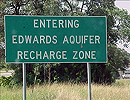 |
The Edwards Aquifer of South Central Texas
The Edwards Aquifer is one of the most prolific karst aquifers in the United States. The Edwards is the primary water source for more than two million people in the San Antonio area and also provides water for industry, agriculture, and recreational purposes. |
Geary Schindel,
Chief Technical Officer/Director
November 5, 2012
|
 |
Alaska Caving: America's Final Frontier
|
Carlene Allred
June 6, 2012
|
 |
Caving Robot: 3d Mapping and Characterization from DEPTHX
|
Marcus Gary, Reuben Reyes,
Todd Halihan, Nathaniel Fairfield,
Bill Stone, John M. Sharp, Jr.
May 7, 2012
|


